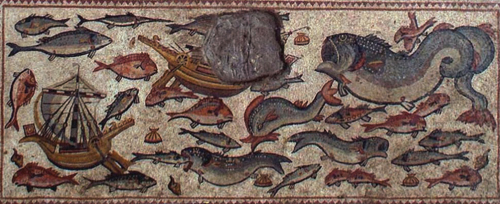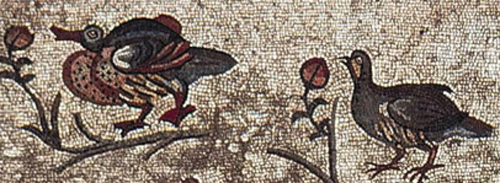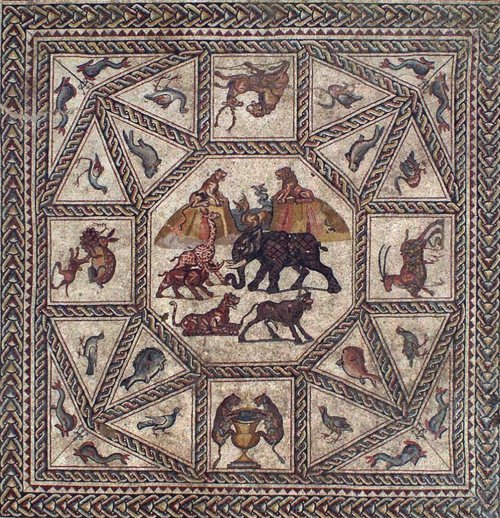 Resins from pine and cashew trees, and Egyptian moringa oil: these are the essential ingredients of a rich woman’s beauty routine in Italy before the dawn of the Roman empire. The solid, yellow cream was found in an Egyptian alabaster vase belonging to an aristocratic Etruscan lady and is thought to be more than 2,000 years old. The results of a scientific analysis have just been published in July’s edition of Journal of Archaeological Science.
Resins from pine and cashew trees, and Egyptian moringa oil: these are the essential ingredients of a rich woman’s beauty routine in Italy before the dawn of the Roman empire. The solid, yellow cream was found in an Egyptian alabaster vase belonging to an aristocratic Etruscan lady and is thought to be more than 2,000 years old. The results of a scientific analysis have just been published in July’s edition of Journal of Archaeological Science.
While a concoction of these oils may not sound particularly attractive to modern women (let’s face it, the oily unction sounds like a sure pore-blocking formula), its Egyptian origin meant it was probably a highly-prized beauty product that only elite Etruscans could afford. Moringa oil is native to Africa and India and was used by ancient cultures for its high vitamin content and skin-softening properties. Egyptians used to place vases of it in their tombs and it was also used as a hair conditioner and deodorant.
The Etruscan tomb where this particular vase of cream was found belonged to a lady called Thana Presnti Plecunia Umranalisa a member of one of Chiusi‘s most important Etruscan families, according to researchers. The cream’s container was found in a beauty case, which also contained other objects such as rings and tweezers. The tomb was discovered in 2005 in an Etruscan necropolis near Chiusi, in Tuscany, Italy. The team of archaeologists was lead by Dr Mario Iozzo, until 2008 director of the National Archaeological Museum of Chiusi, and responsible for the Archaeological patrimony of that area.
According to Dr Iozzo, now vice-director of the National Archaeological Museum of Florence and curator of the Greek and Magna Grecia sections, less than one-quarter of the cream was left inside the alabaster container. He told Heritage Key by email that “this is still a great deal, and analyses are currently being done in Brussels and Paris as well, in order to try to recover as much data as we can.”
Discovery News reported the results of some chemical analysis of the cream and quoted Erika Ribechini, a researcher at the department of chemistry and industrial chemistry of Pisa University, as saying: “The content of the cosmetic case was found under a clay layer which deposited throughout time. This made it possible for the ointment to survive despite (the fact that) the vessel had no cap. This is almost unique in archaeology. Even though more than 2,000 years have passed, the oxidation of the organic material has not yet been completed.”
This modern retailer of moringa oil may now have to update their web site, which says the oil has a stable shelf life of just five years. How about changing this to 2,000 years plus?
 The stadium was built in 86 AD, less than a decade after the Colosseum, during the reign of
The stadium was built in 86 AD, less than a decade after the Colosseum, during the reign of  Today the only part still visible of Domitian’s stadium is the north curve. As with modern stadiums, the terraces were divided and each section had its own entrance. Part of the steps up onto the terraces can still be seen, as well as the supporting walls with their niches that once contained statues. The stadium was built with two levels of arches (it was slightly lower than the Colosseum) and would have been embellished with hundreds of statues of athletes in each niche. Most of these statues have been lost in time, but one example (just the torso remains) is thought to be the work of the famous Greek sculptor Praxiteles and depicts the god Apollo.
Today the only part still visible of Domitian’s stadium is the north curve. As with modern stadiums, the terraces were divided and each section had its own entrance. Part of the steps up onto the terraces can still be seen, as well as the supporting walls with their niches that once contained statues. The stadium was built with two levels of arches (it was slightly lower than the Colosseum) and would have been embellished with hundreds of statues of athletes in each niche. Most of these statues have been lost in time, but one example (just the torso remains) is thought to be the work of the famous Greek sculptor Praxiteles and depicts the god Apollo.  This weekend a Roman-era fourth century mosaic in the Israeli city of
This weekend a Roman-era fourth century mosaic in the Israeli city of  It is extremely well preserved and covers an area of 180 square metres, made up of more than two million individual stones. It shows vivid colourful scenes of fish, ships, birds and hunting scenes of native African animals. According to a spokesperson for the IAA, the mosaic is similar to others found in Tunisia and elsewhere in
It is extremely well preserved and covers an area of 180 square metres, made up of more than two million individual stones. It shows vivid colourful scenes of fish, ships, birds and hunting scenes of native African animals. According to a spokesperson for the IAA, the mosaic is similar to others found in Tunisia and elsewhere in  Previously known as Lydda, the city of Lod re-assumed its Hebrew name in 1948 when it became part of Israel. It is also home to Tel Aviv’s Ben Gurion international airport. The city, which has evidence of settlers as far back as 5,600 BC, was subject to
Previously known as Lydda, the city of Lod re-assumed its Hebrew name in 1948 when it became part of Israel. It is also home to Tel Aviv’s Ben Gurion international airport. The city, which has evidence of settlers as far back as 5,600 BC, was subject to  According to a recent article in the
According to a recent article in the  Wildfires are a big problem in southern Italy. Every year they sweep the tinder-dry countryside and often threaten forests, farmers’ land and human habitation. In Sicily and Campania in particular, ancient heritage sites can also be in danger from summer fires. Despite state publicity about not throwing cigarette butts out of car windows and well-publicised hot-lines (no pun intended) for reporting local fires, it seems that the authorities are fighting a losing battle.
Wildfires are a big problem in southern Italy. Every year they sweep the tinder-dry countryside and often threaten forests, farmers’ land and human habitation. In Sicily and Campania in particular, ancient heritage sites can also be in danger from summer fires. Despite state publicity about not throwing cigarette butts out of car windows and well-publicised hot-lines (no pun intended) for reporting local fires, it seems that the authorities are fighting a losing battle.  South of Corso
South of Corso Rome’s Only
Rome’s Only  A short walk from the
A short walk from the  An Important Step for the Heritage of North East England
An Important Step for the Heritage of North East England
 Those seven kings of Rome that I mentioned earlier? Well, here they are:
Those seven kings of Rome that I mentioned earlier? Well, here they are: